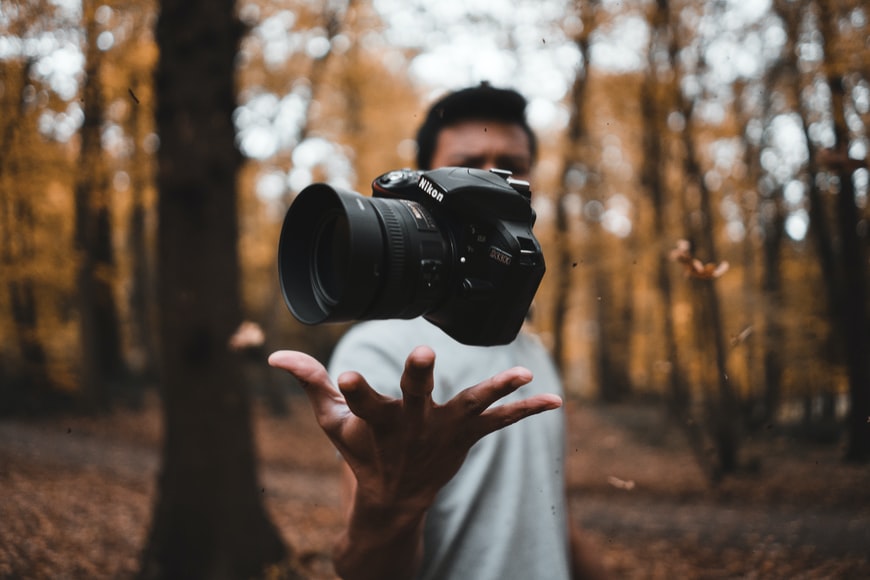
Capturing the natural world in all its beauty has been a pursuit of humans for centuries. From the early days of paintings and sketches to the advent of modern photography, the technology behind nature and landscape photography has evolved significantly. In this article, Photographer Thomas Baskind will dive into the fascinating technology that enables photographers to capture the stunning vistas, wildlife, and elements of nature with precision and artistry.
The Foundation: Cameras and Lenses At the heart of nature and landscape photography lie cameras and lenses. While traditional film cameras have their charm, digital cameras have revolutionized the field, offering higher resolution, faster shooting speeds, and convenient post-processing capabilities. Digital single-lens reflex (DSLR) and mirrorless cameras are the most popular choices among photographers, providing versatility and image quality suitable for a variety of settings.
Equally important are the lenses, which determine the framing, clarity, and depth of field in a photograph. Nature photographers typically use wide-angle lenses to capture vast landscapes, telephoto lenses for distant wildlife shots, and macro lenses for close-up details of flowers and insects.
Advancements in Sensor Technology
The advancement of digital camera sensor technology has been pivotal in improving the quality of nature and landscape photography. Sensors with higher megapixel counts allow photographers to capture intricate details with stunning clarity. Moreover, improved sensor designs now offer better low-light performance, reducing noise in photos taken during dawn, dusk, or in dimly lit environments.
Dynamic Range and High Dynamic Range (HDR (News - Alert))
Dynamic range refers to the ability of a camera to capture both the darkest and brightest areas of a scene. Nature and landscapes often present challenging lighting conditions, with bright skies and dark shadows. High Dynamic Range (HDR) photography is a technique used by photographers to capture a wide range of tones in a single image. This is achieved by blending multiple exposures, ensuring that no details are lost in either the highlights or shadows. HDR photography brings out stunning details and creates a more balanced representation of the scene, revealing the beauty of the natural world in all its glory.
Tripods and Stability
Stability is essential in nature and landscape photography to ensure sharp, clear images. Tripods are invaluable tools that keep the camera steady during long exposures or when using heavy telephoto lenses. Sturdy tripods are designed to withstand different terrains and weather conditions, offering photographers stability and peace of mind to focus on composition and exposure settings.
Filters for Creativity and Control
Photographic filters are versatile tools that nature photographers use to enhance their images and exercise greater control over light and color. Circular polarizers reduce glare and boost colors, particularly useful when shooting water surfaces and lush foliage. Graduated neutral density filters help balance the exposure between the sky and the landscape, avoiding overexposed skies in certain situations. Additionally, color-enhancing filters can add warmth or coolness to a scene, depending on the photographer's creative vision.
Post-processing Software
The digital era has brought an array of post-processing software that allows photographers to fine-tune their nature and landscape images. Adobe (News - Alert) Photoshop and Lightroom are two popular choices that offer powerful editing tools, allowing photographers to adjust exposure, contrast, color balance, and even remove unwanted elements from the frame. However, while post-processing can enhance photographs, it's essential to maintain a balance and preserve the authenticity of the captured scene.
Drone Technology for Aerial Perspectives
Drone technology has significantly impacted nature and landscape photography by providing photographers with access to aerial perspectives that were once only possible through helicopters or aircraft. Drones equipped with high-resolution cameras enable photographers to capture breathtaking bird's-eye views of mountains, rivers, and other natural wonders, offering viewers a unique and immersive experience.
The technology behind nature and landscape photography has come a long way, empowering photographers like Thomas Baskind to capture the wonders of the natural world with unparalleled precision and artistry. From advanced cameras and lenses to innovative post-processing software and drone technology, these tools provide photographers with the means to share the beauty of our planet, inspire awe, and foster a deeper appreciation for the wonders that surround us. As technology continues to evolve, we can expect even more exciting possibilities and opportunities for nature photographers to capture and preserve the splendor of our world for generations to come.
